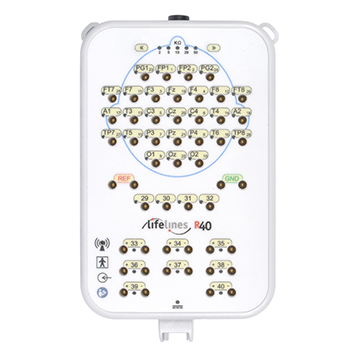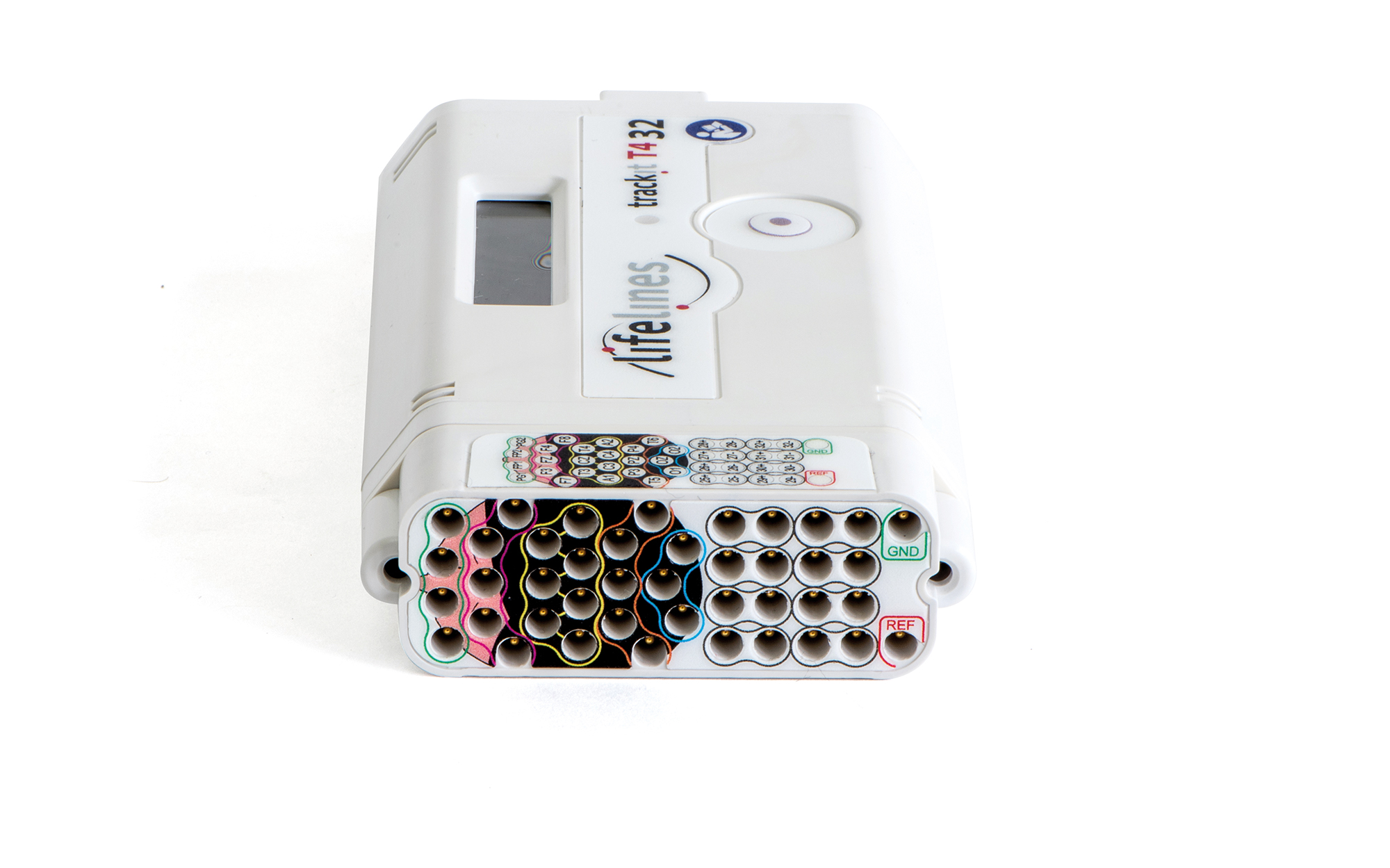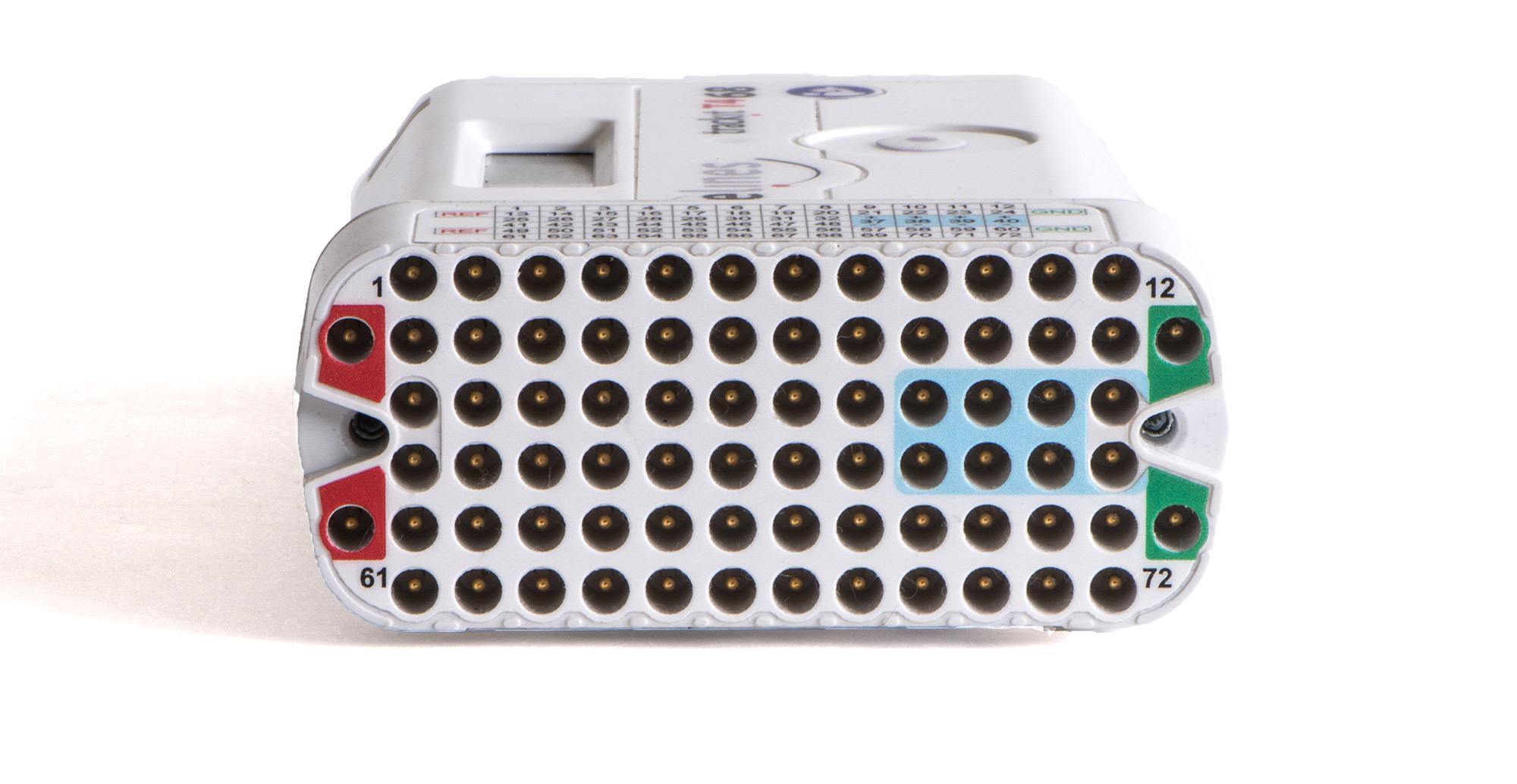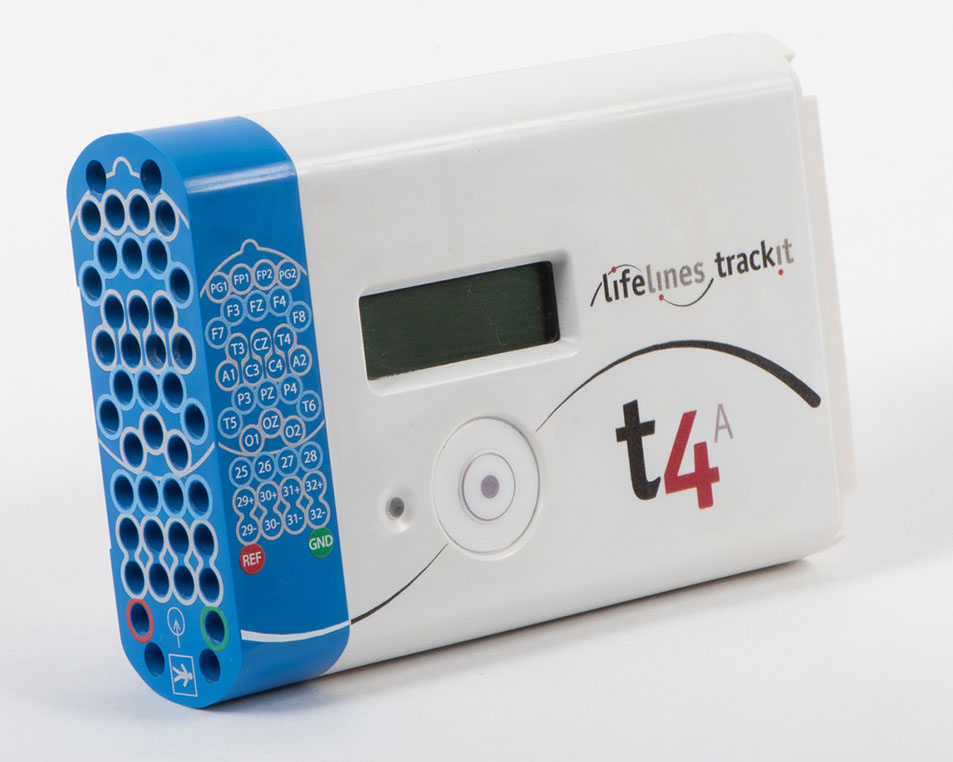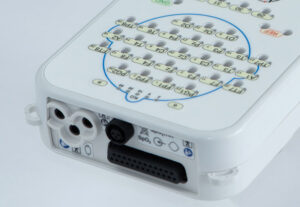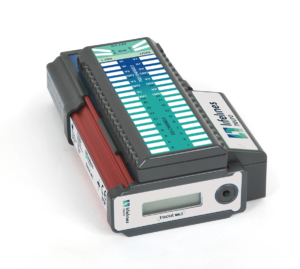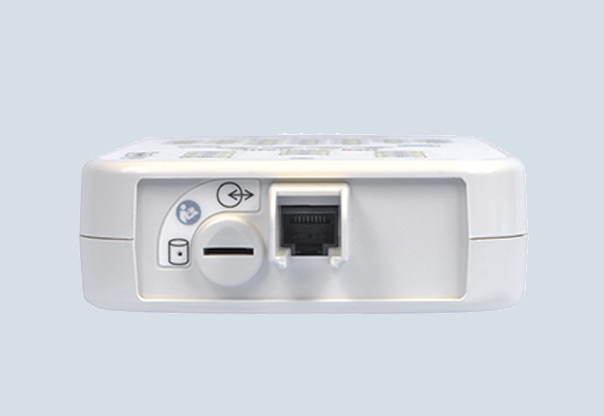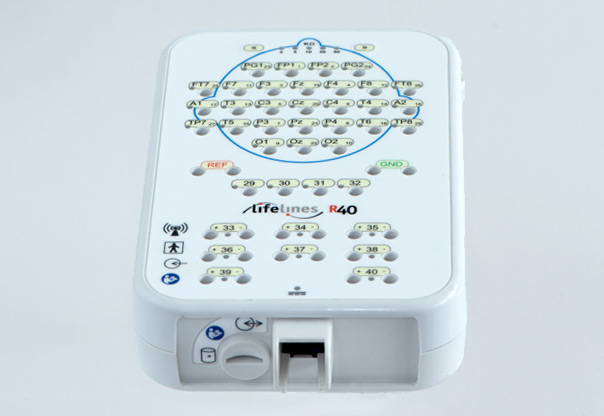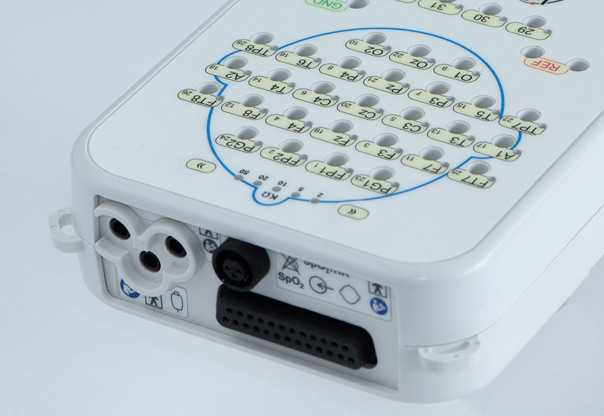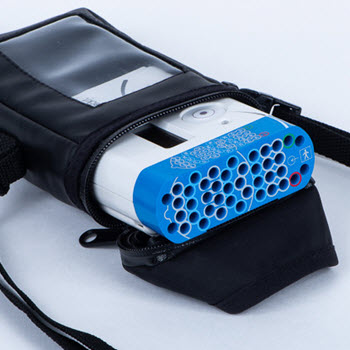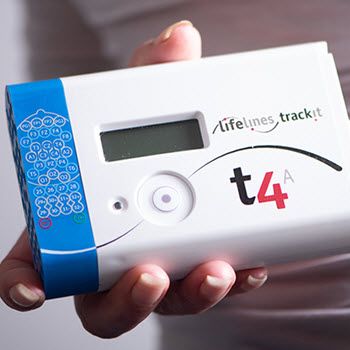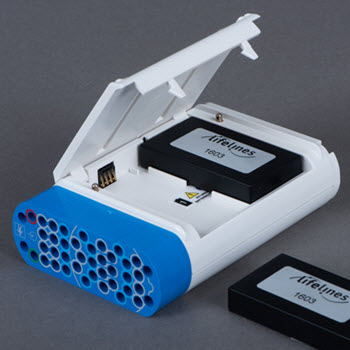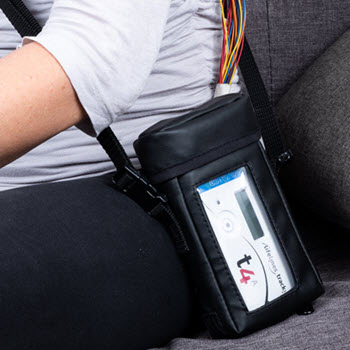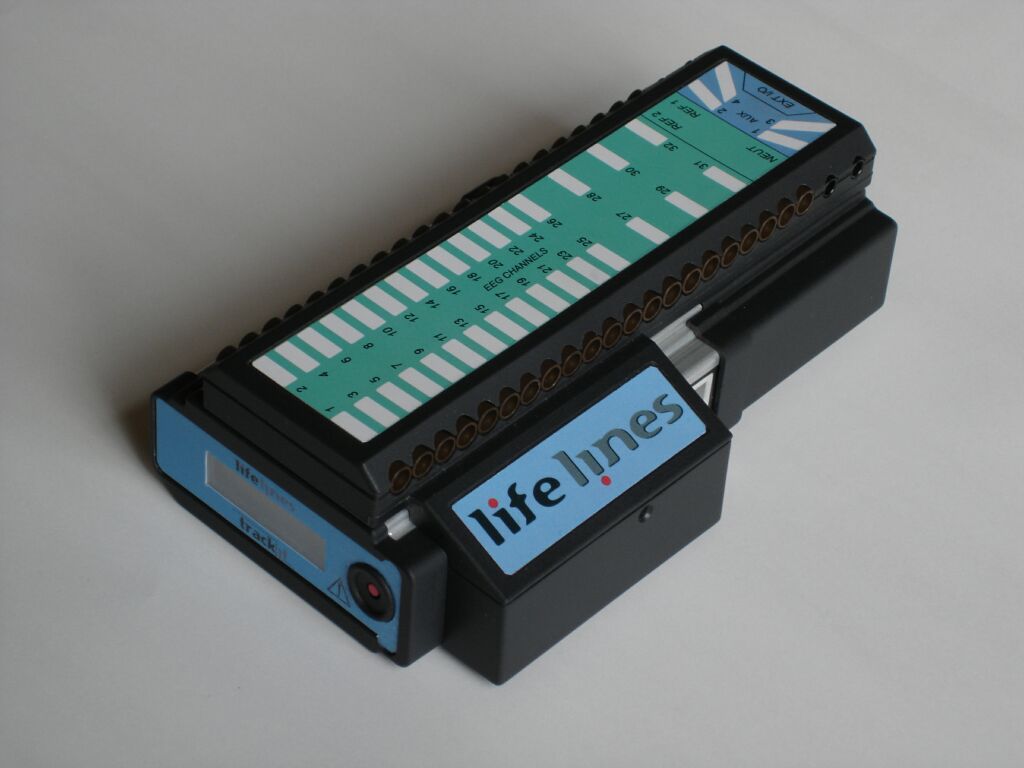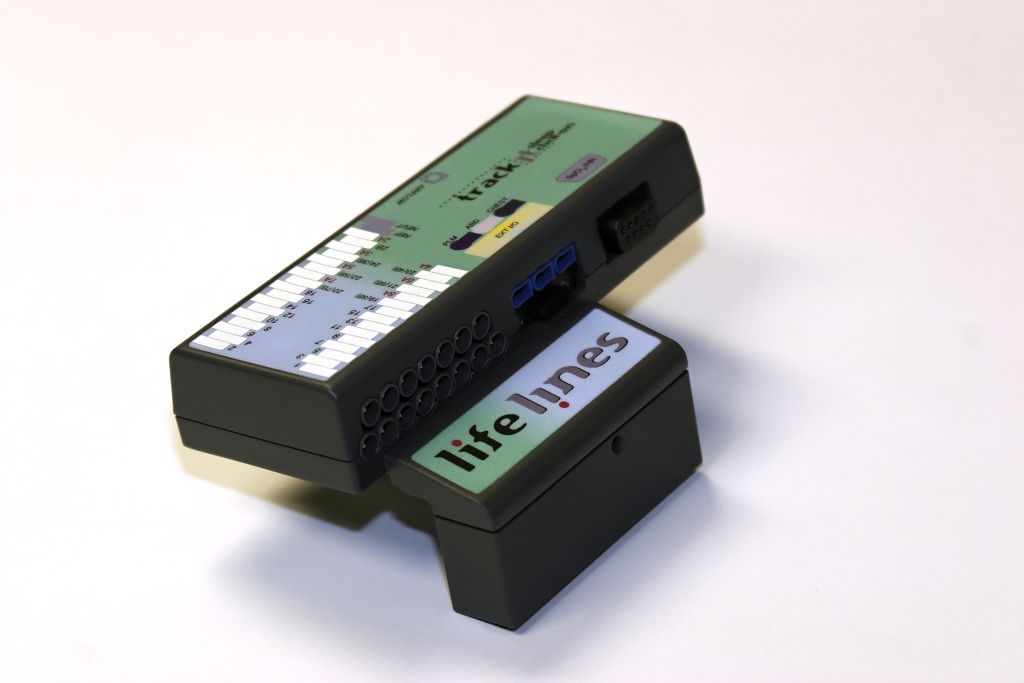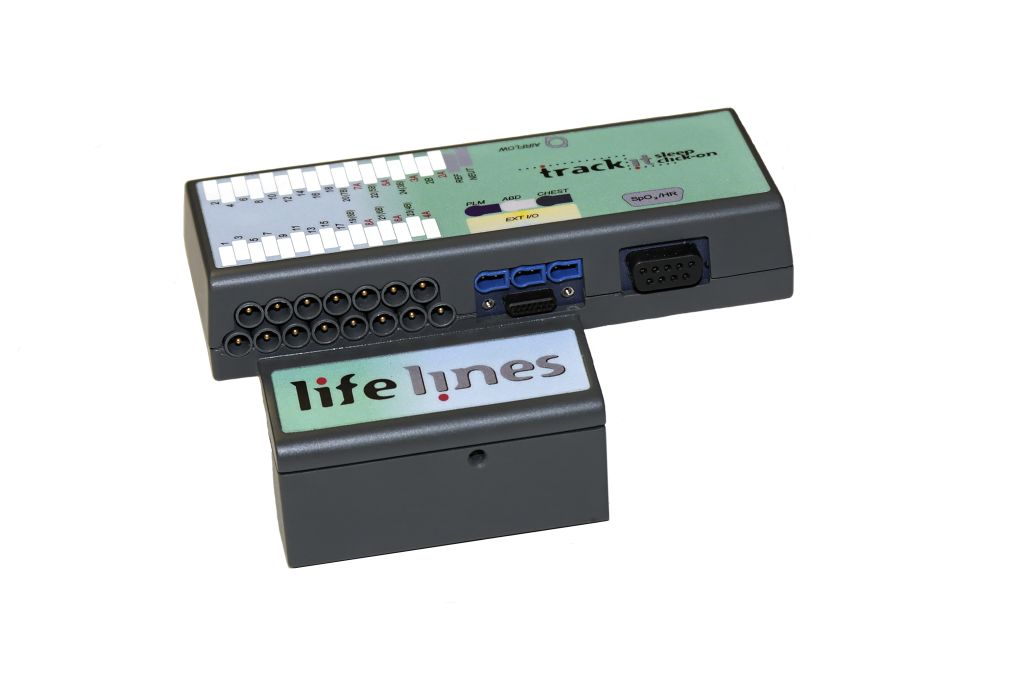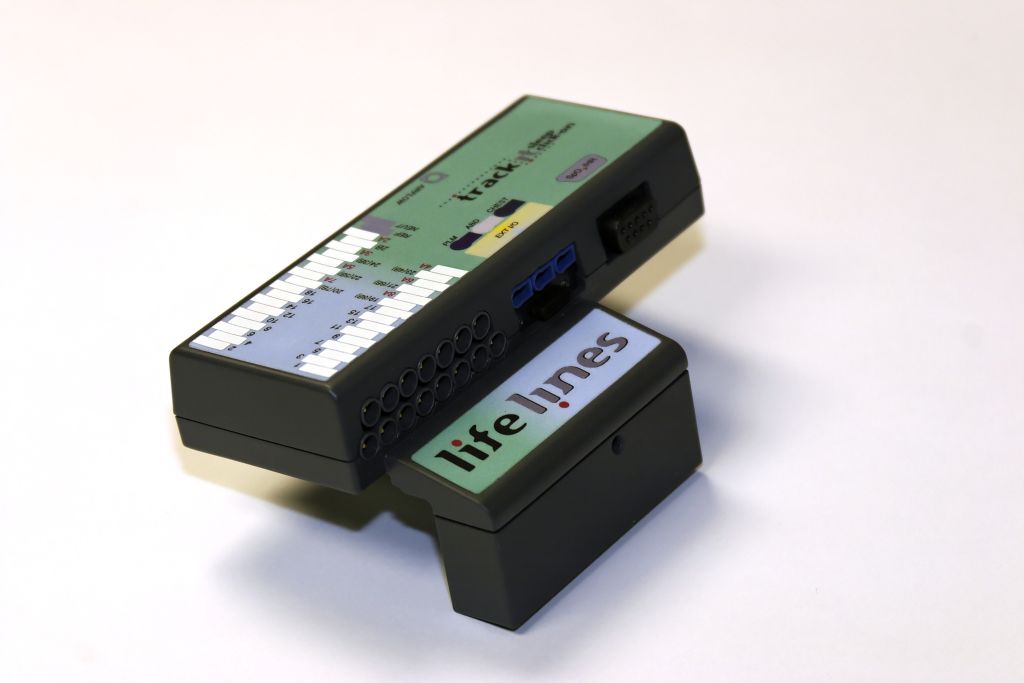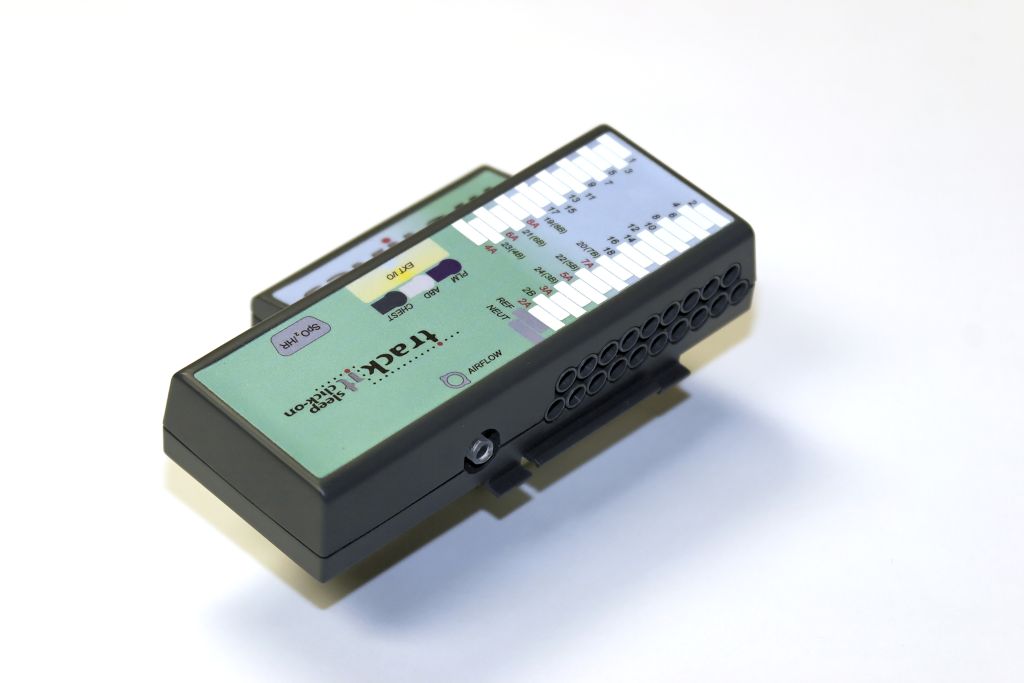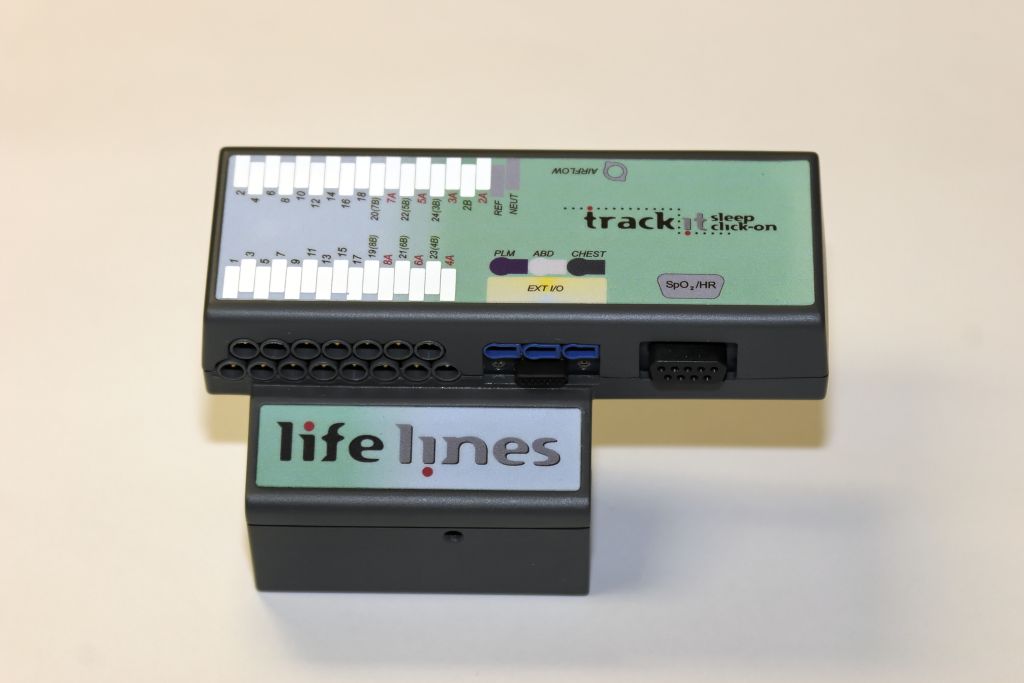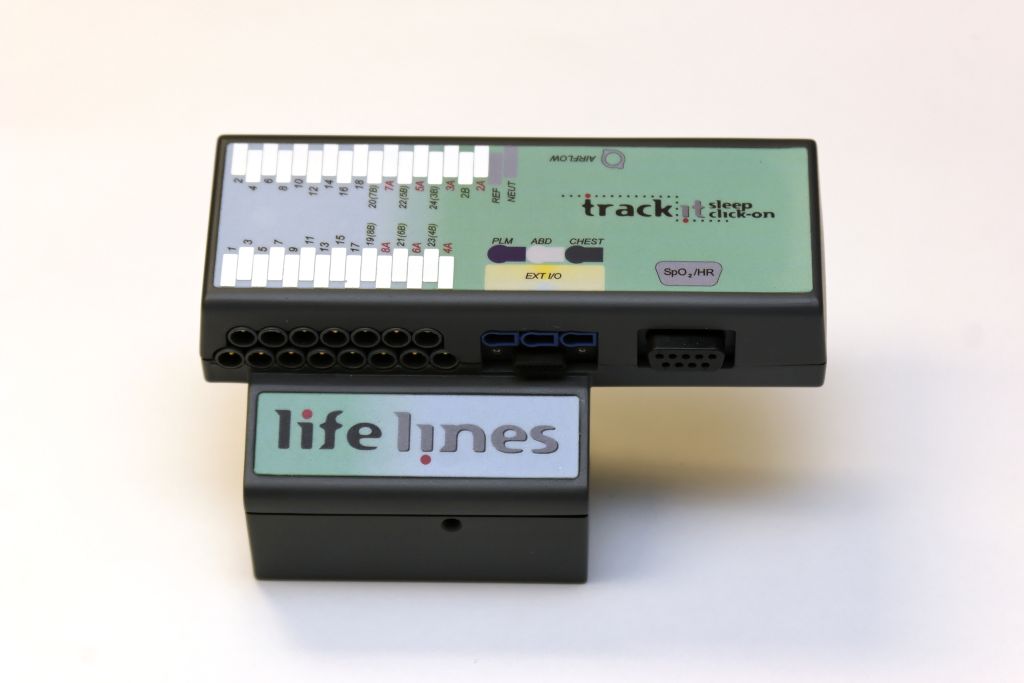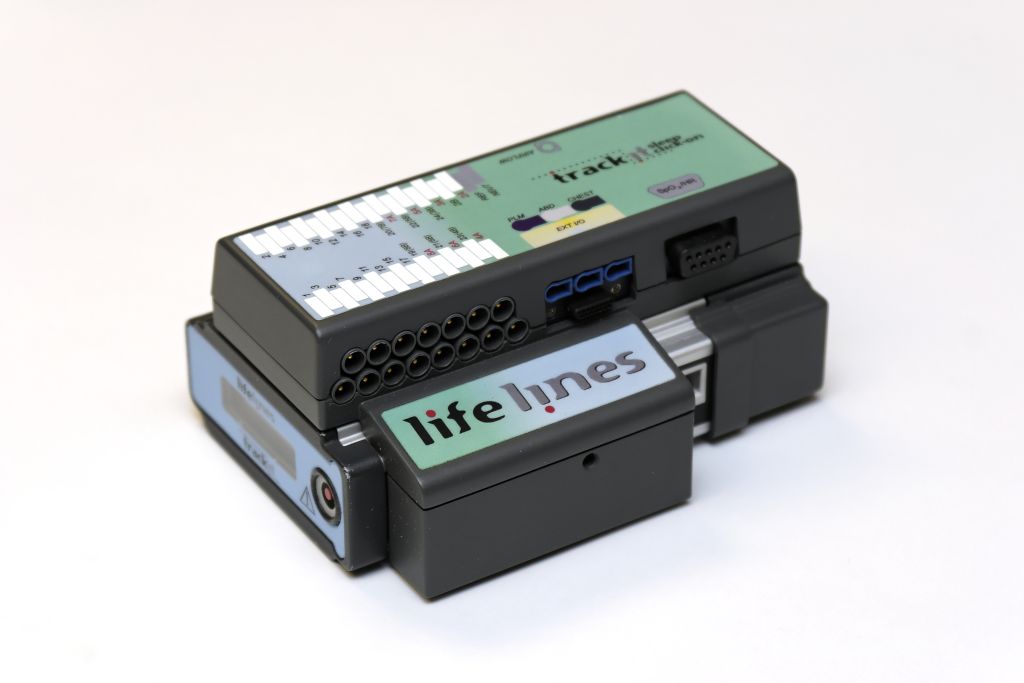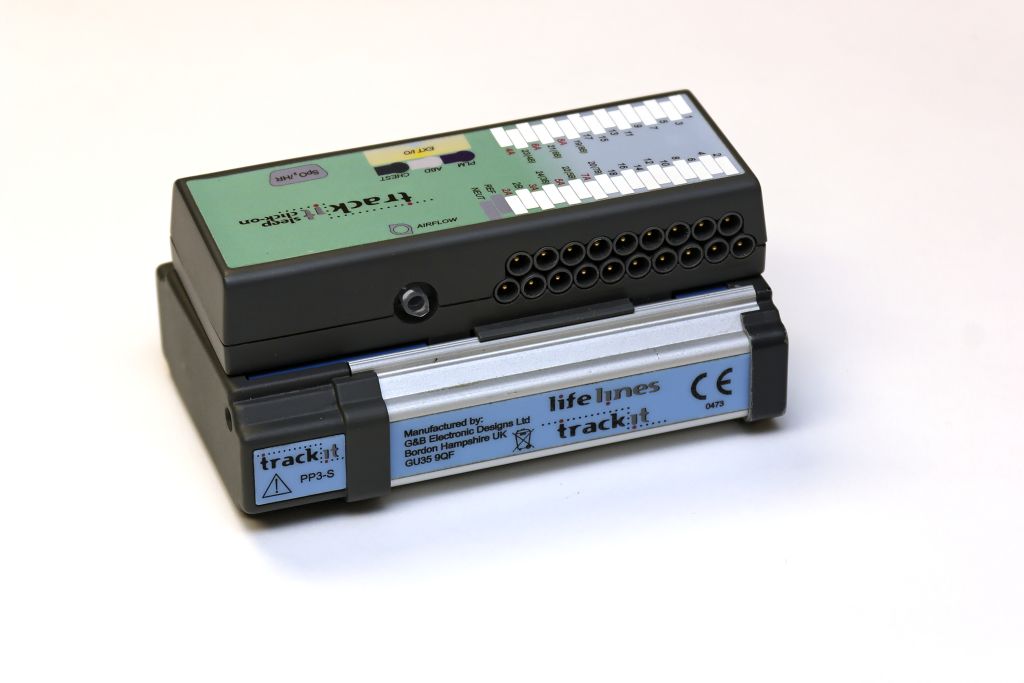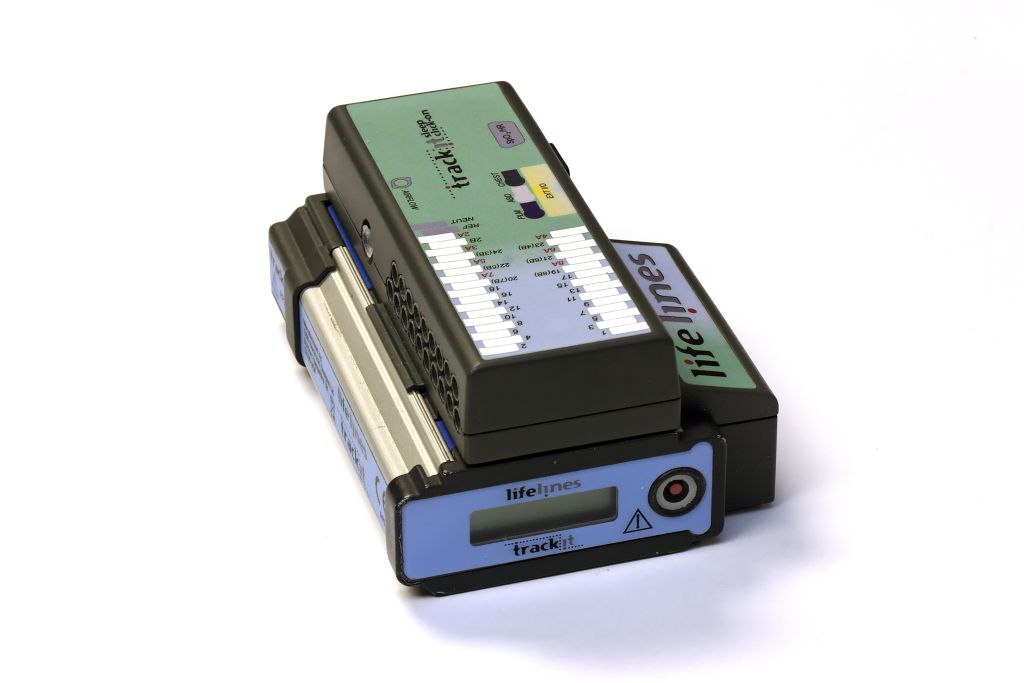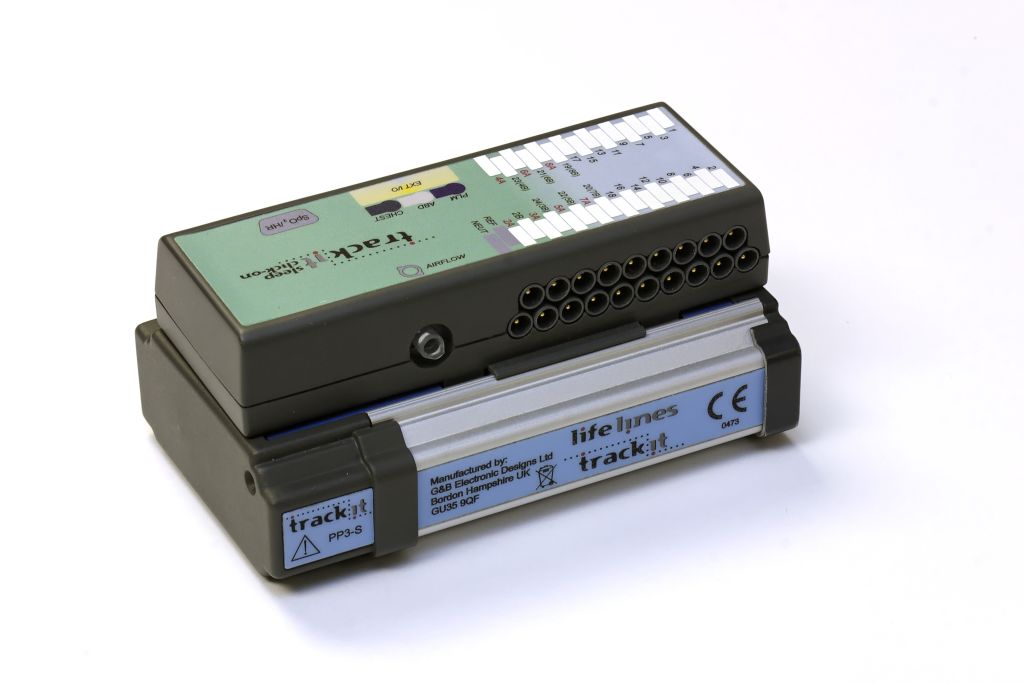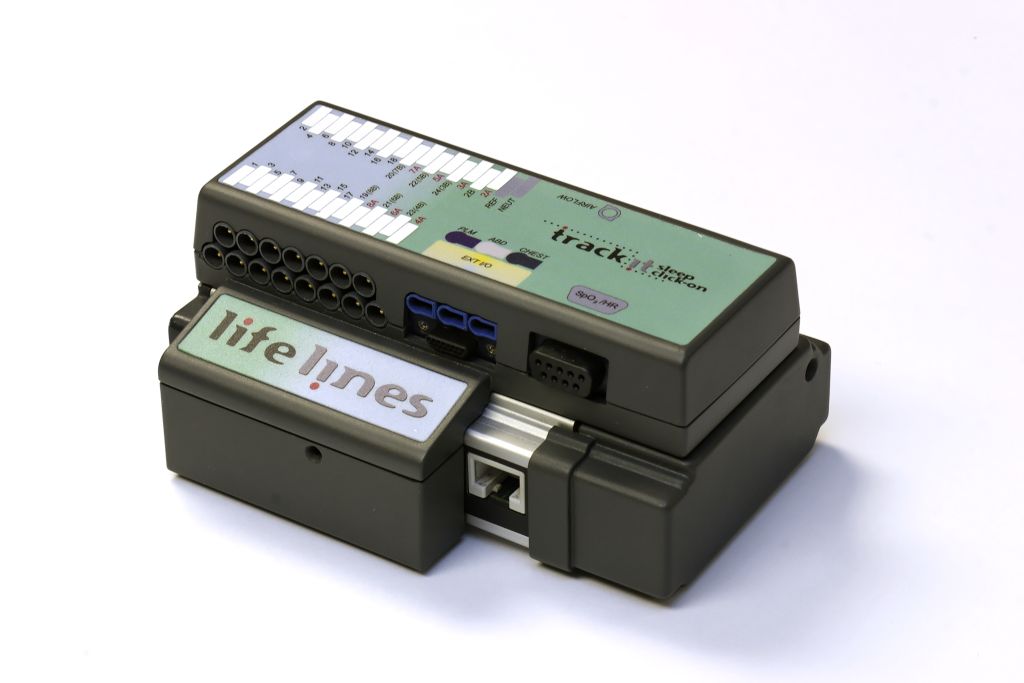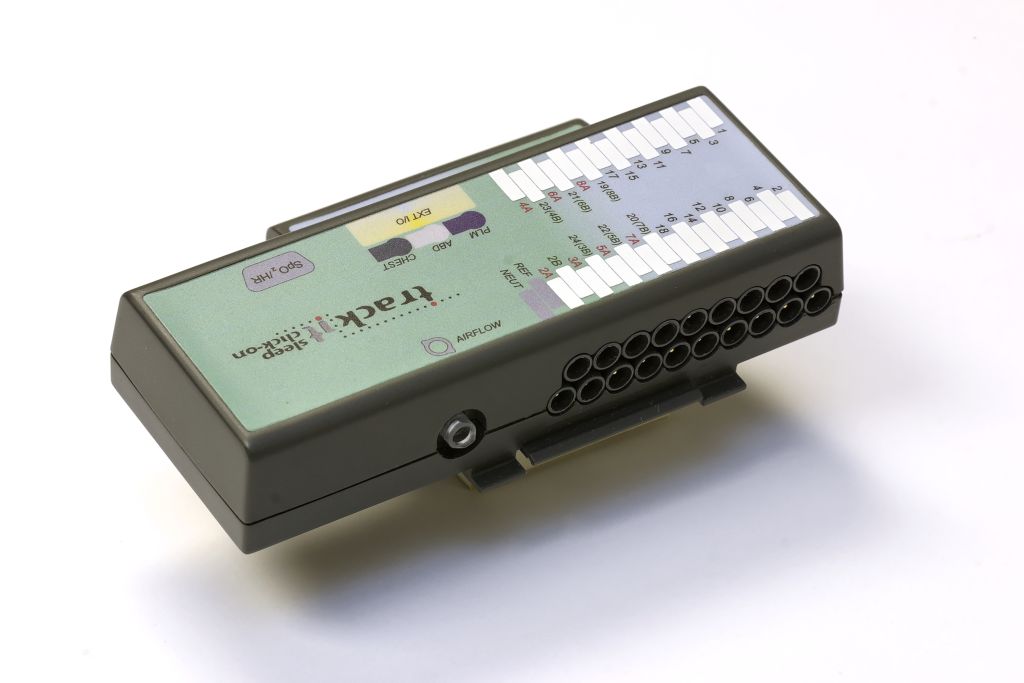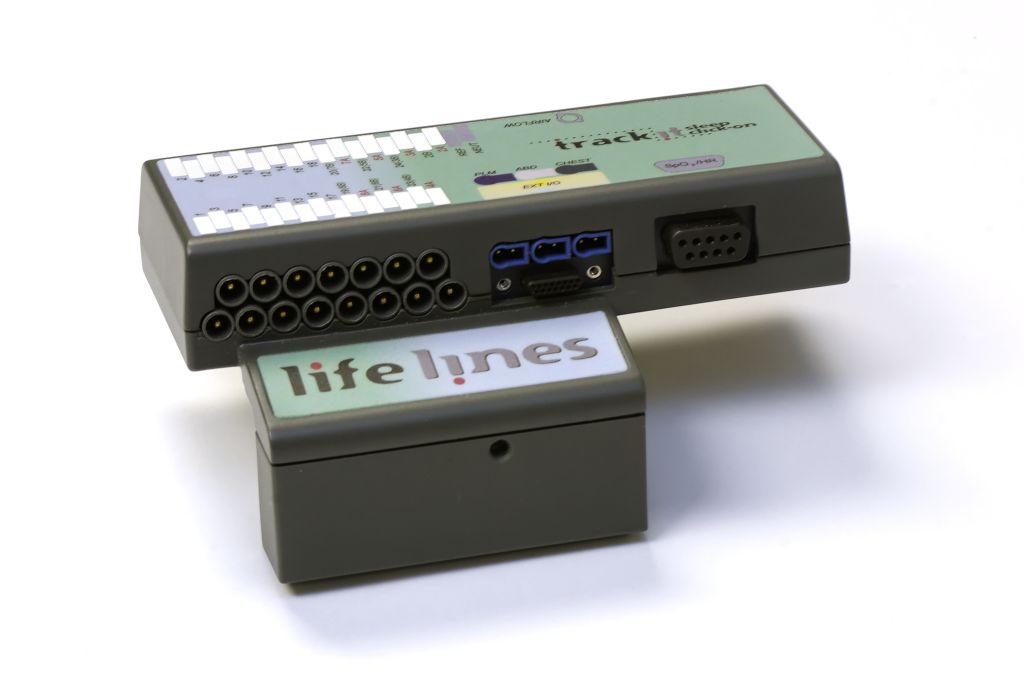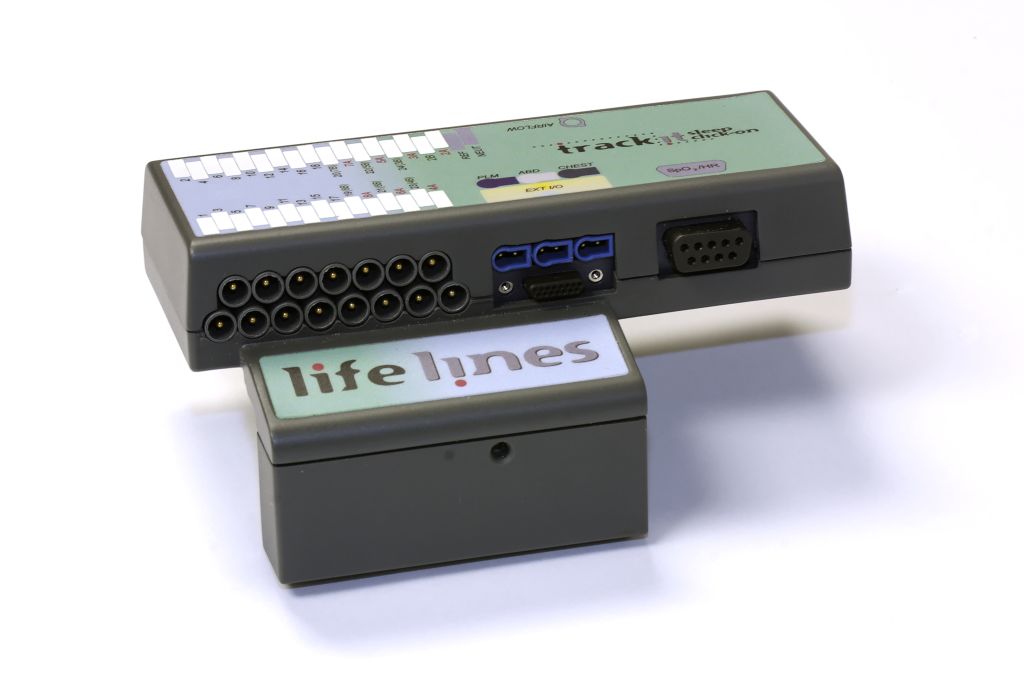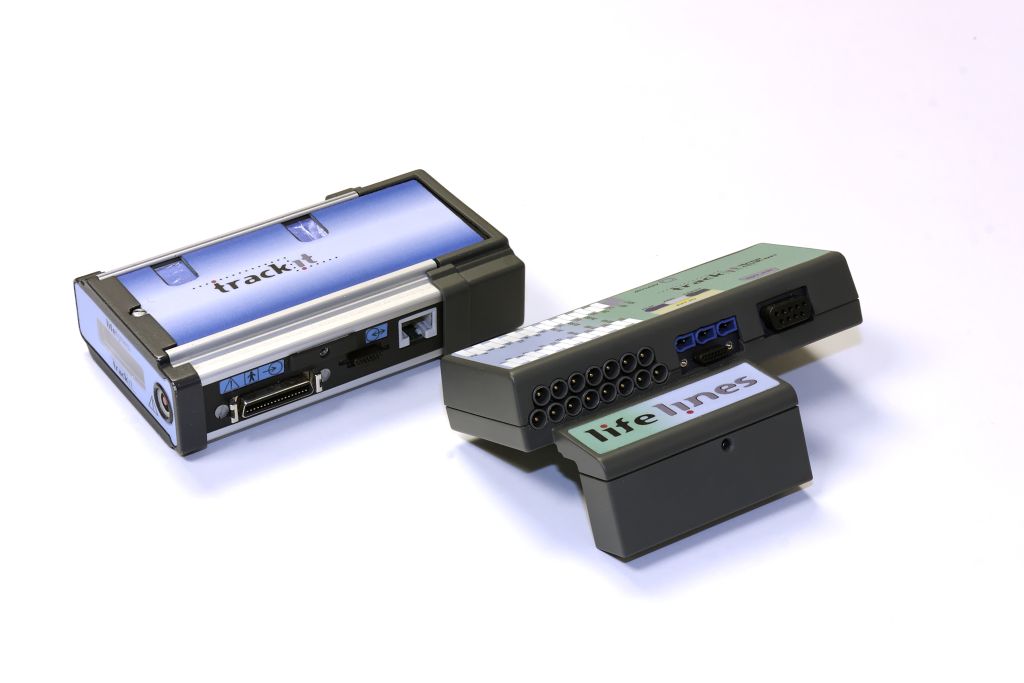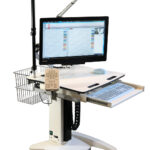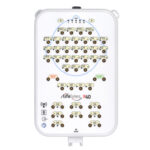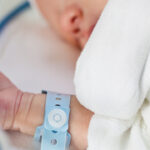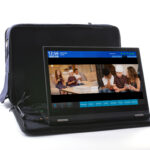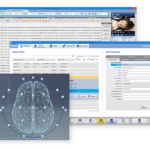A new generation amplifiers
The R40 is a 40-channel USB EEG amplifier designed for use in routine EEG, lab monitoring and research applications. It is used in the diagnosis of neurophysiological disorders such as epilepsy.
The Amplifier incorporates 32 referential channels and 8 polygraphic channels with built-in calibration and electrode impedance measurement. It also offers:
- A Nonin XPOD interface
- A Patient Event input
- 2 Aux DC inputs
- An Electrocap connector
The Amplifier has built in type-BF patient isolation and has a USB interface to the PC. The highest signal accuracy is ensured with DC-coupling throughout and the use of 24-bit conversion. Optional wireless communication is available via Bluetooth and WLAN WiFi. For details see the full specifications below.
EEG inputs: 32 monopolar touch proof inputs/8 bipolar touch proof polygraphy inputs
- ADC Resolution 24 bits
- Sampling 250-2000 Hz simultaneous sampling all channels
- Input impedance >20 Mohms
- CMRR >120dB @ 50 and 60 Hz
- Equivalent input noise <1.5µVpp, <0.2uV rms
- Gain 12 ±0.5%
- DC offset tolerance 750mVpp (+/-375)
- Quantization 0.17uV/bit @ Gain = 12
- Bandwidth (-3dB) DC to 524Hz @ 250Hz sampling
- Max common mode input voltage 0.4Vpp
- Input bias current < ±0.3 nA
- Front-end Calibration 8mVpp ±5% at 0.98Hz
- Impedance Check current 24nA ±20% at 7.8Hz
Aux, high-level Inputs 2 (channels 39 and 40)
- ADC Resolution 24 bits
- Sampling 250-2000 Hz simultaneous sampling all channels
- Input impedance 100 Kohms
- Gain 4 ±0.5%
- Max Input Vdiff 2.25Vpp dynamic range
- Bandwidth (-3dB) DC to 524Hz @ 250Hz sampling
Auxilary Input/output
- Isolated SpO2 (HR and plethysmogram) from integrated Nonin module
- Isolated patient event button, TTL digital pulse (5V or 3.3V)
- Trigger input from Photic
- Connections, ports and controls
- 55 Electrode Input Connectors, BF isolated, touch proof 1.5mm
- E-cap connector, standard 25-pin D socket
- 2 Aux DC Inputs
- Patient Event Button
- Front-panel push-buttons (2) to increase/decrease Imp Check threshold (2-5-10-20-50)
- Host PC Connector (USB), isolated from patient
- Nonin Xpod (Binder 710 series 3-pin socket) for SaO2
– Nonin interface gives HR, SaO2 and pulse-wave (plethysmogram). - Micro-SD card port
LED Indicators
- Impedance Check indication on all 40 channels
- Impedance Check Level (2-5-10-20-50)
- Power On
- Wireless operation
Battery
- Internal Battery – type LIR2450 Lithium-ion
rechargeable Coin cell
Amplifier Memory
- Optional micro SD card
Operating Environment
- Temperature: +10°C to +40°C
- Relative humidity: 25% to 95% non-condensing
- Atmospheric pressure: 700mB to 1060mB
Dimensions and Weight
- Dimensions: 17cm x 11cm x 4cm/6.7in x 4.3in x 1.6in
- Weight: 400 g/0.88 lbs
- Acquisition of EEG in referential mode
- DC recording capabilities on all channels
- 32 monopolar channels
- 8 channels configurable as bipolar or referential
- 2 channels aux high-level inputs
- Full International 10-20 system including extend
inputs (FT7-FT8-TP7-TP8) - All inputs are BF isolated
- Front end calibration
- Continuous impedance check
- Integrated impedance measurement: amplifier
and software display - High sampling rates: 250-2000 Hz simultaneous
sampling on all channels (wired and wireless) - Data storage on optional SD card
- Transmits data either wireless or wired
Nonin interface gives HR, SaO2 and pulse-wave (plethysmogram) - Battery powered options
The T4 is the very latest Long Term Monitoring amplifier, available in a 32 channel version with 24 referential and 8 polygraphy channels, or a 68 channel version with 64 referential and 4 polygraphy channels.
This amplifier is ideal for telemetry recordings communicating via high speed bluetooth (v4) or it can be powered and EEG data streamed to the acquisition system via the USB cable.
T4 Highlights
- Highly adaptable telemetry amplifier
- Choice of three PCUs
- Wideband amplifier suitable for clinical and research use
- Up to 50 hours of continuous recording
- Can record to micro SD card without the need of a PC
The T4 is available with a range of simple plug in Patient Connection Units (PCUs), allowing the amplifier to be quickly configured to different EEG applications.
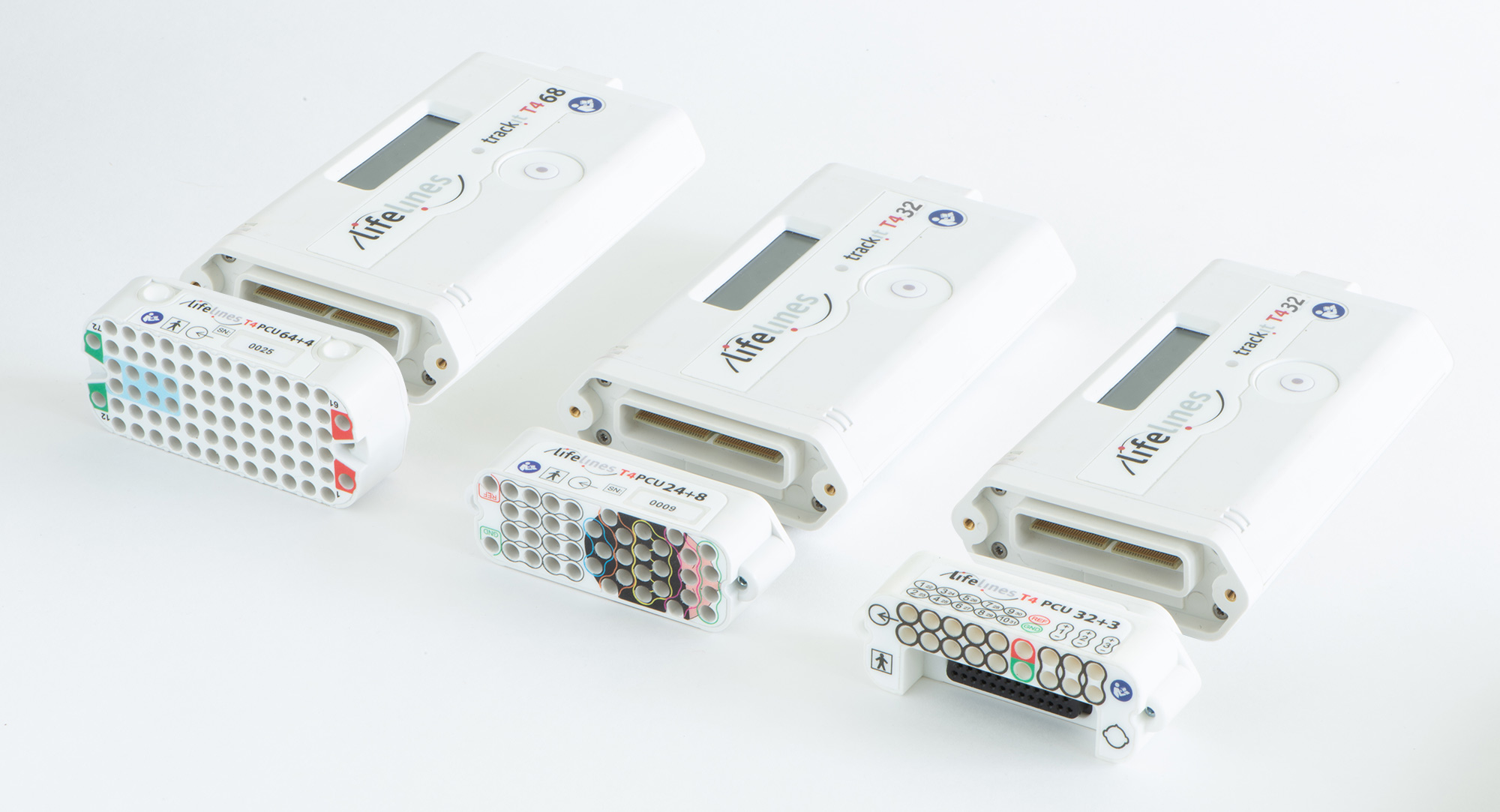
Quick 32+3; comes with a “D”-type connector, ideal for use with electrode-cap systems. The Quick PCU also benefits from 10 additional touch-proof inputs as well as three polygraphy inputs.
Standard 24+8; uses touchproof inputs conveniently laid out in the 10/20 system to aid electrode application
Extended – 68+4; for those detailed EEG examinations, this PCU is laid out in simple numeric grid – not recommended for use with the T4-32
Built into the main body as standard the T4 amplifier also has:
- A Nonin XPOD interface
- A Patient Event input
- 2 Aux DC inputs
The Amplifier has built in type-BF patient isolation and the highest signal accuracy is ensured with DC-coupling throughout and the use of 24-bit conversion.
- DC recording capabilities on all channels
- Integrated impedance measurement
- Continuous impedance check
- High simultaneous sampling rates on all channels
- High common mode rejection ratio (CMRR) and very low noise amplifier minimize interference and ensure that only high-quality EEG signals are recorded
- Bluetooth or USB connectivity
- Patient event button or option for an external patient event marker button
- Dual recording mode for data security
- EEG data can be stored on a micro SD card
- Wide range of recording channels
- EEG data is stored in Biosense Data Format (BDF)
- EEG recordings compatible with many leading third-party EEG review software packages
- Highly adaptable telemetry amplifier
- Open choice of electrodes including a dedicated PCU for e-caps
- Quality EEG recording assured with the use of high quality, low noise amplifier
- A true wideband amplifier capable of recording very slow EEG responses (direct current potential shifts) on all channels
- Wide range of recording channels
- Highly adaptable telemetry amplifier
- Open choice of electrodes including a dedicated PCU for e-caps
- Quality EEG recording assured with the use of high quality, low noise amplifier
- A true wideband amplifier capable of recording very slow EEG responses (direct current potential shifts) on all channels
- Wide range of recording channels
- Nonin interface provides HR, SaO2, and pulse-wave (plethysmogram)
- Patient-activated marker to time stamp events during recording
- 50 hours recording with a single battery charge
- Data can be uploaded and reviewed online via dedicated cloud services
Lifelines latest ambulatory EEG amplifier, the Trackit™ T4A, is the fourth generation Trackit and is smaller, lighter, and more efficient than ever before. Weighing just 12 ounces, the T4A is an ideal choice for children and adults alike and comes in a sturdy, yet soft, water-resistant bag that stands up to rigorous home use standards.
See more on the Lifelines Neuro website here.
The T4A cleverly combines low power with high performance, making it a truly efficient ambulatory device capable of five days of continuous recording, three with Bluetooth. If battery changes are necessary, the latched battery compartment can be accessed in seconds but is kept safe from patient tampering.
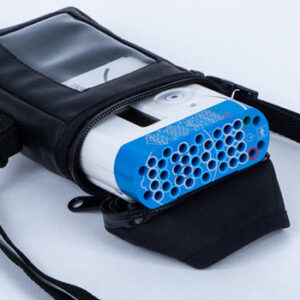
The built-in PCU prevents interruption of studies during daily activities or sleeping, and the patient event button is easy to access without opening the protective pouch.
- 28 EEG and 4 bipolar channels
- Robust design suited for tough ambulatory use
- Bluetooth connectivity for synchronized video recording
- Transmits either wirelessly or wired
- High sampling rates, 250- 2000Hz
- Continuous impedance check
- Data recorded to SD cards
- Patient-worn pouch (bag)
The Trackit™ Mk3: designed for Ambulatory EEG and Sleep Applications
Trackit™ was designed from the outset with both Ambulatory EEG and Sleep applications in mind and the Trackit™ Mk3 has become well-respected for its consistently high performance and lab quality recordings. Its small, compact size makes it ideal for ambulatory EEG recording applications in both children and adults.
Trackit’s unique architecture allows the system to be configured either as an ambulatory recorder with local storage, a headbox with cable or wireless communication to a host computer with the Trackit™ Plus software. Trackit™also allows a dual recording capability when doing host PC recordings – the EEG data will always be backed up on the Trackits internal flash memory.
The Trackit™ Mk3 is available in a range of models:
- 32, 24 & 12 monopolar touch proof inputs
- 24 monopolar/8 bipolar touch proof inputs
- 18 monopolar/8 bipolar touch proof inputs
- 20 monopolar/4 bipolar touch proof inputs
- Clinical decisions made with confidence and without need of repeat recordings
- Signal quality with no compromises – at least as good as a clinical EEG
- A wide range of monitoring requirements can be addressed
- Uninterrupted recordings for up to 4 days
- Removable battery compartment and backup battery allows even longer recordings when the need arises
- Patient activated time stamped events during recording
- Designed and built for tough ambulatory use
- Bluetooth connectivity for synchronized video recording
- Flexible recording inputs; 4 high level DC, 8 bipolar DC polygraphy, and 24 mono-polar EEG channels
- Robust device with strong metal box, a lockable battery bay and the use of plug-in batteries
- A wide range of sampling rates from 1 – 256Hz with independent sampling on the polygraphy and AUX channels
- Removable battery compartment
- Choice of either disposable or rechargeable batteries
- 96-hour recordings
- Data stored in an open EDF data format
- Data compatible with any commercially available EDF file review program


